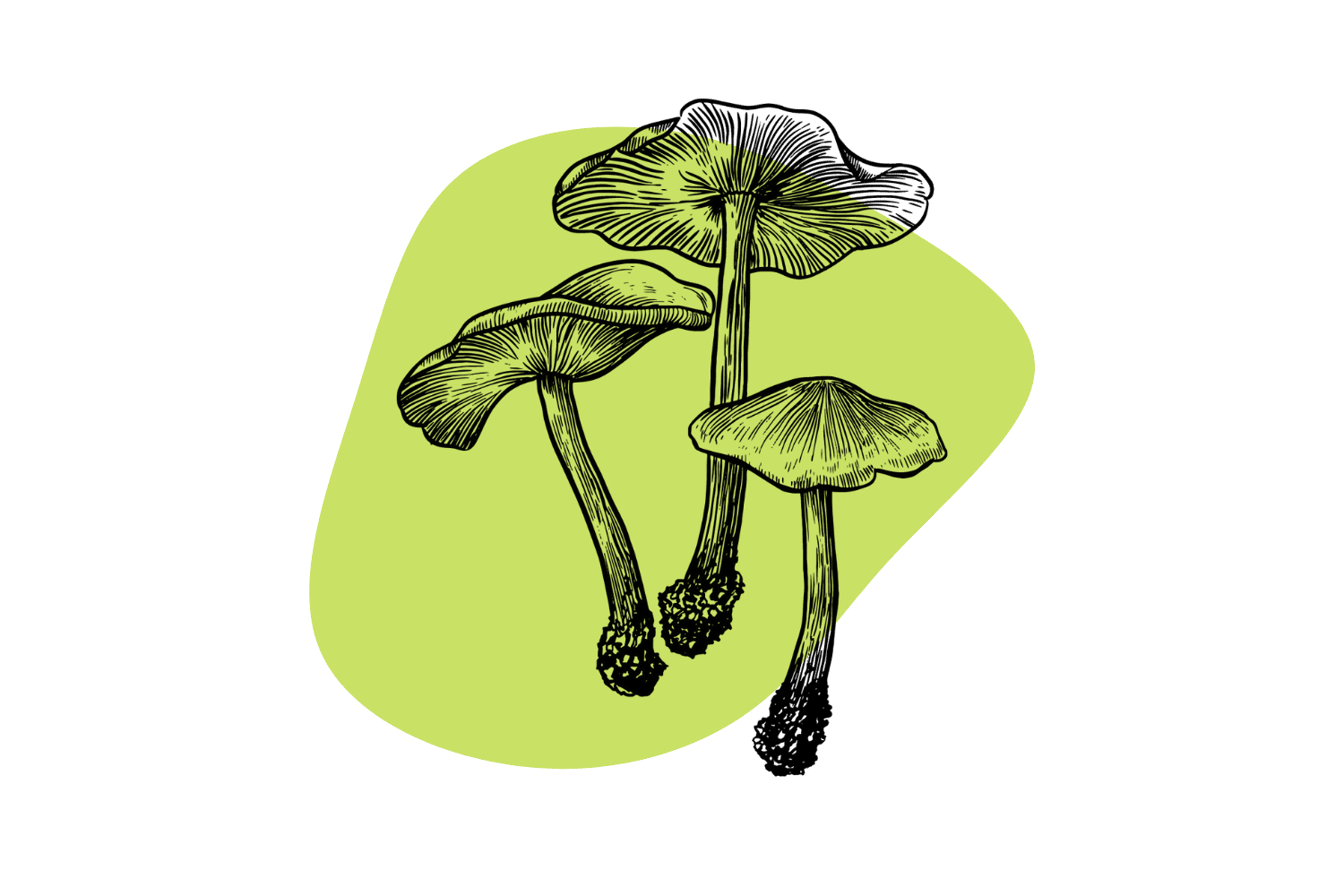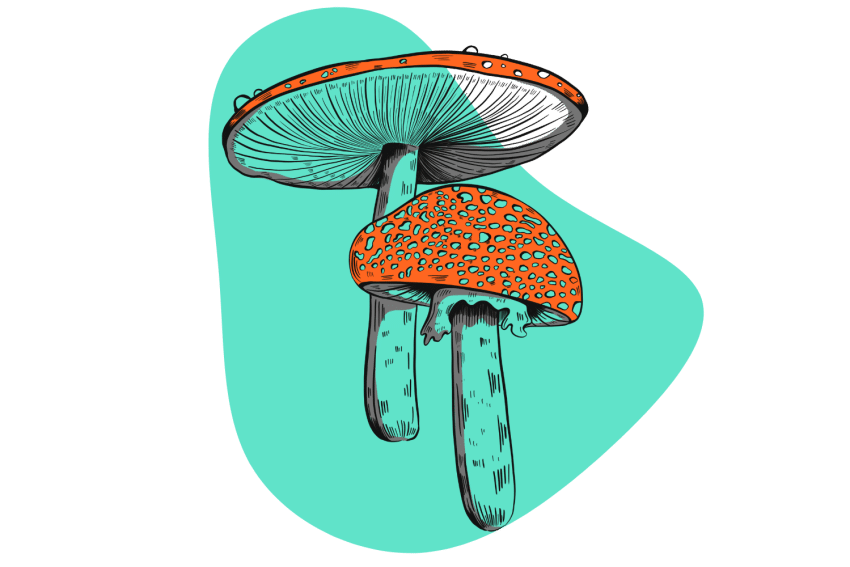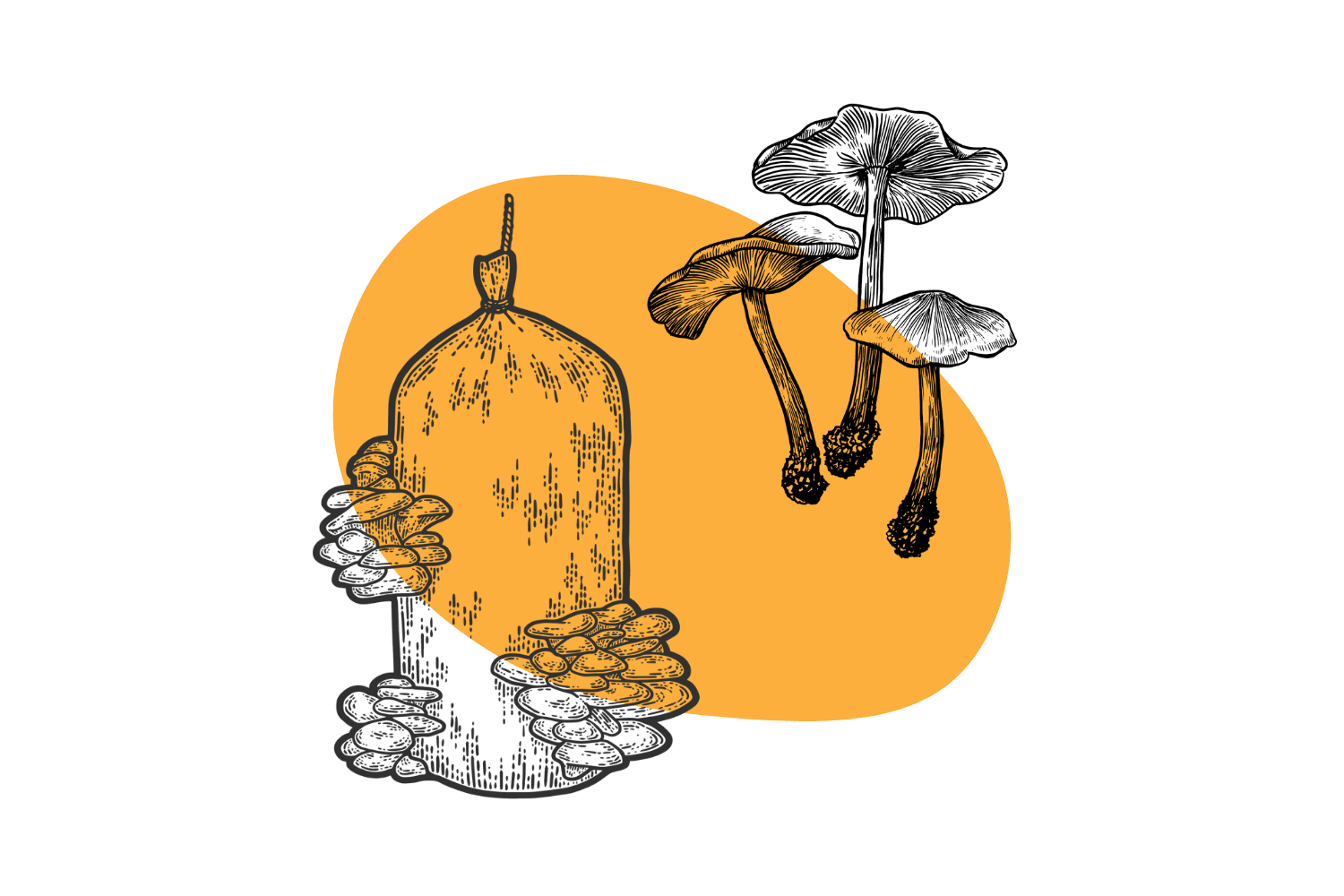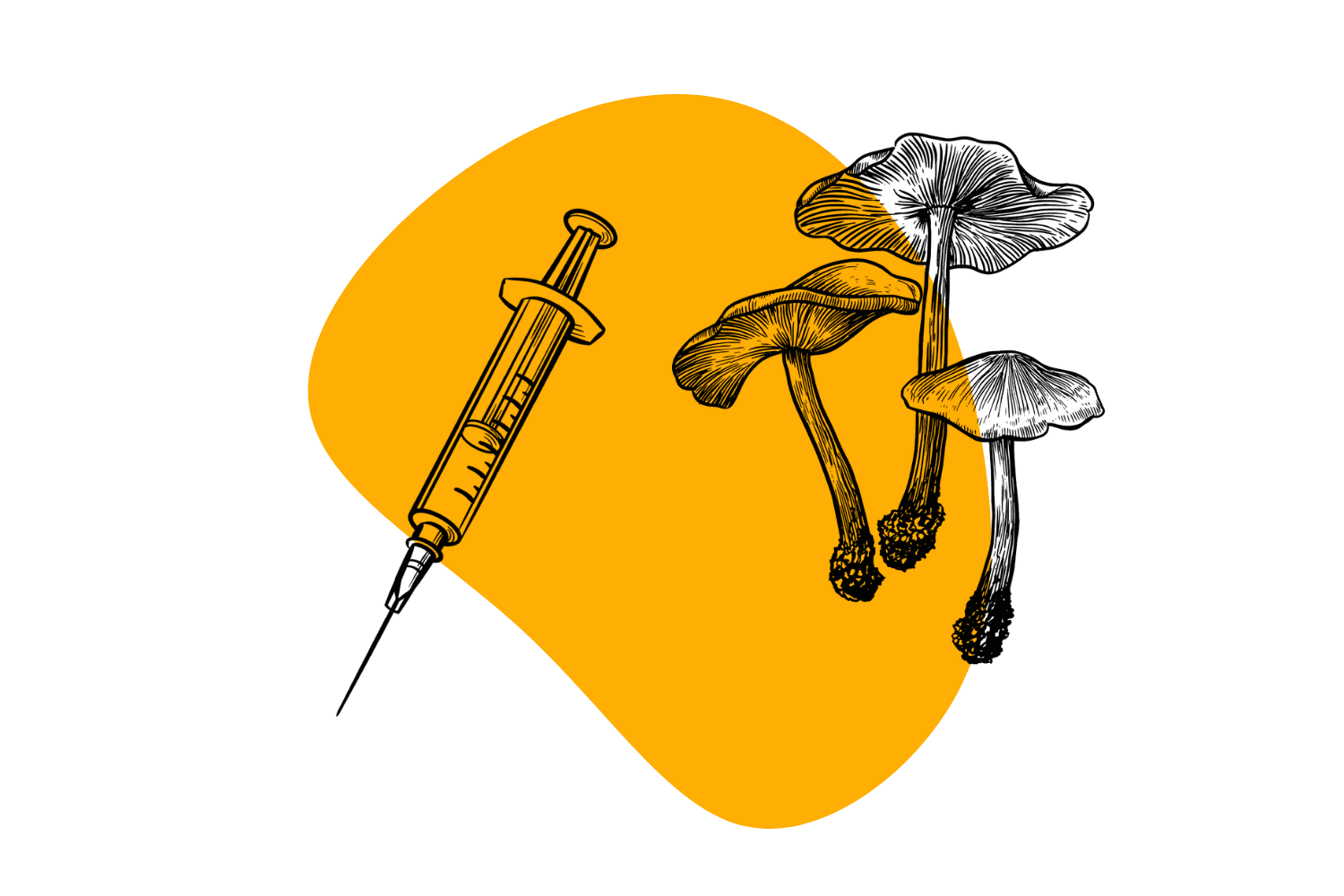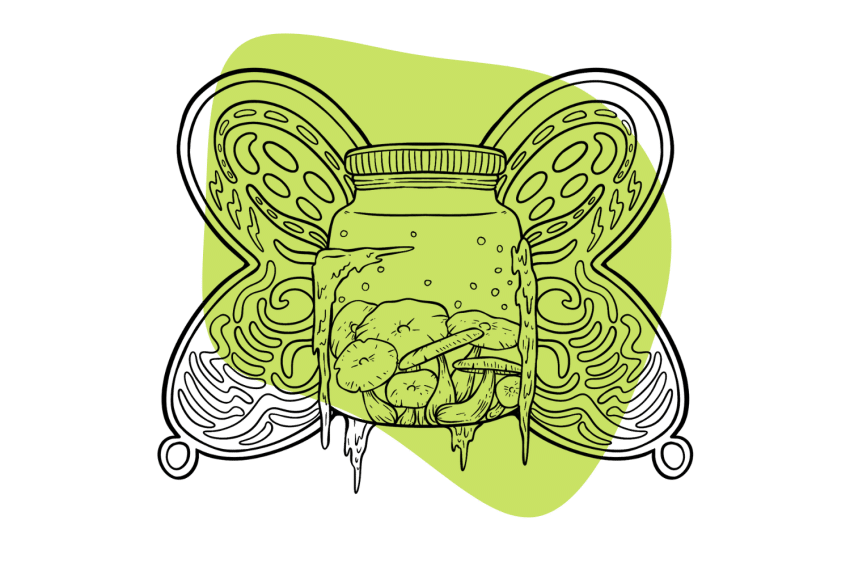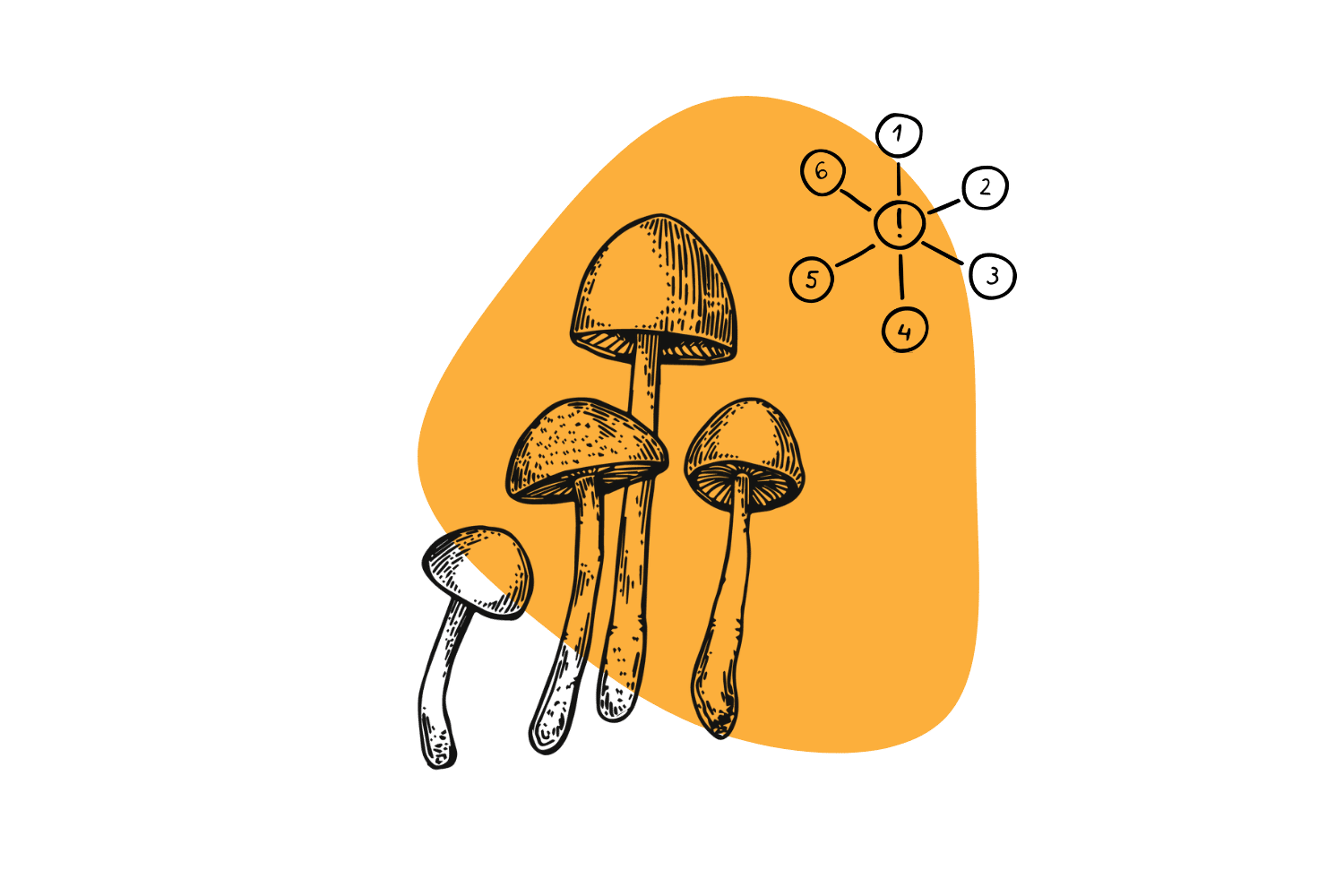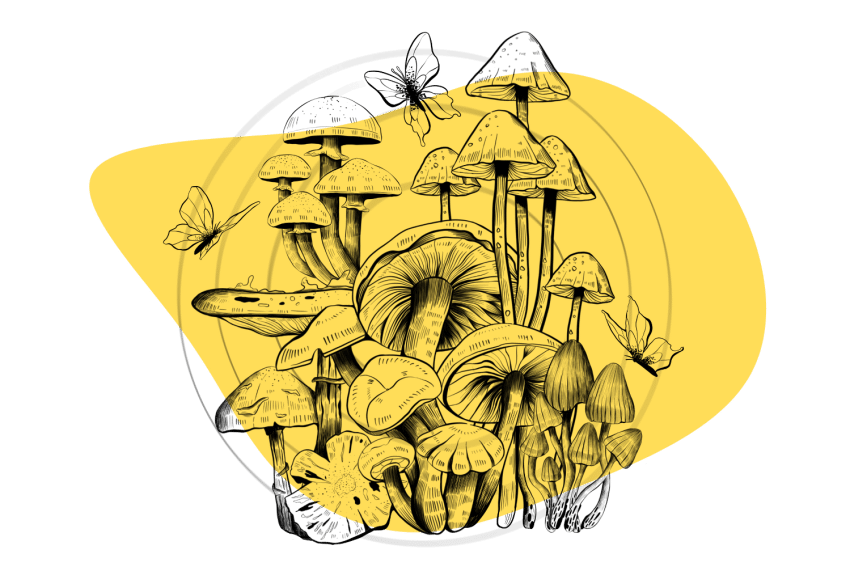Creepers Shroom Strain: Everything You Need to Know About This Mysterious Strain
Some say the Creeper strain is a hoax — we’ll let you decide.
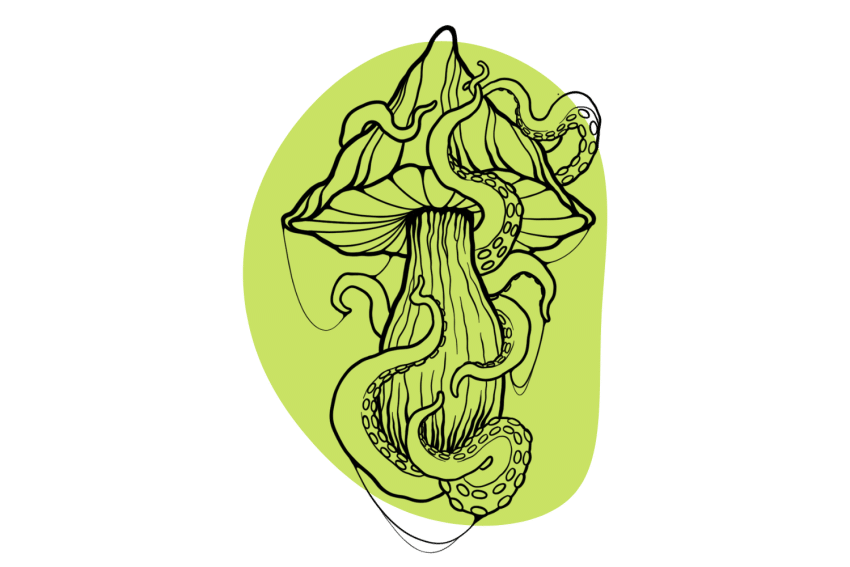
The Creeper mushrooms are a strain of magic mushrooms first sold by the Shroomery user “The Keeper.”
There’s a lot of debate as to whether this strain actually deserves the title of strain or not.
Let’s examine what happened.
The Keeper was a frequent user on the mushroom cultivation forum Shroomery.org where he would often sell spores to other growers. He would brand the products he sold as “Keepers X” and at one time had a decent selection of strains to choose from.
However, starting around 2014, the Keeper started receiving a lot of flack for allegedly rebranding already infamous and ubiquitous mushroom strains and jacking up the price (in some instances, as high as $80 for a spore syringe that would normally cost around $15–$25).
As a result of this, it’s unclear whether Keepers Creepers (the original name) was truly a unique strain or not. Many experts speculate it’s actually the Cambodian strain rebranded. Others suggest they might be a copy of either the Hawaiian strain or Tasmanian strain.
Regardless, Keepers Creepers is still around, but most vendors have dropped the name (and the obnoxiously high price) and just sell them as “Creepers.”
Despite what Keeper claimed, these mushrooms are about average when it comes to potency. Most users describe the trip they produce as unlike anything else they’ve ever experienced. Some trip reports suggest the experience is a bit “darker” than they’ve experienced with other strains — they have a tendency to quite literally “creep up on you.”
Whether this is due to the influence of the mushroom’s name or something else it up for speculation.
Creeper Shrooms Specs
| Potency | Average 🍄 |
| Cultivation | Beginner |
| Species | Psilocybe cubensis |
| Substrate Recommendation | Rye Grain or Brown Rice Flour |
| Cost | $ |
| Sold By | Ralphsters Spores, Premium Spores, Spore Store, Hidden Forest Spore Store |
Creeper Shrooms Potency & Psilocybin Content
Creepers are considered slightly above average in terms of potency.
However, take this with a pinch of salt. The growing conditions can have a fairly significant impact on the psilocybin and psilocin content of a magic mushroom. Even shrooms from the same batch can vary quite a bit in potency.
In order to quantify the potency of a magic mushroom strain, we need to analyze many different samples to get an average. From all the data we’ve been collecting thus far, we peg the average tryptamine content (psilocybin and psilocin) around 1.3%. Your results may vary.
We often turn to samples of shrooms submitted to Oakland Hyphae’s Psilocybin Cup, where shroom samples are submitted by expert growers to analyze their size and potency. This serves as a sort of “Olympics for mushrooms” to provide data on what’s possible for a given strain.
Unfortunately, no samples of Creeper shrooms were entered into the 2021 Psilocybin Cup, so we cannot use the results as a resource to determine potency.
Creeper Shrooms Variations & Genetic Relatives
Some of the more popular magic mushroom strains go through many iterations and even cross with other strains after they have been isolated from wild mushroom samples.
Strains like Penis Envy, for example, have several unique variations that stem from the initial strain spores (Penis Envy Uncut, Albino Penis Envy, White Rabbit, Yeti, Tidal Wave, and others).
In the case of Creeper shrooms, no such variations have gained any popularity. However, experts believe this strain to be a copy of either the Hawaiian, Cambodian, or Tasmanian strains (unconfirmed).
Where to Buy Creeper Shroom Spores
Despite the Creeper strain not being quite as popular or sought-after as many other strains, spore samples for collecting or cultivating these shrooms are readily available.
If you live in the United States, you can buy Creeper shroom spores from Ralphster’s Spores, Premium Spores, Spore Store, and Hidden Forest Spore Store.
If you live in Canada, you can get Creeper spores from Hidden Forest Mushroom Spores. You can also check Spore Door and Sporeslab, although the strain isn’t always offered.
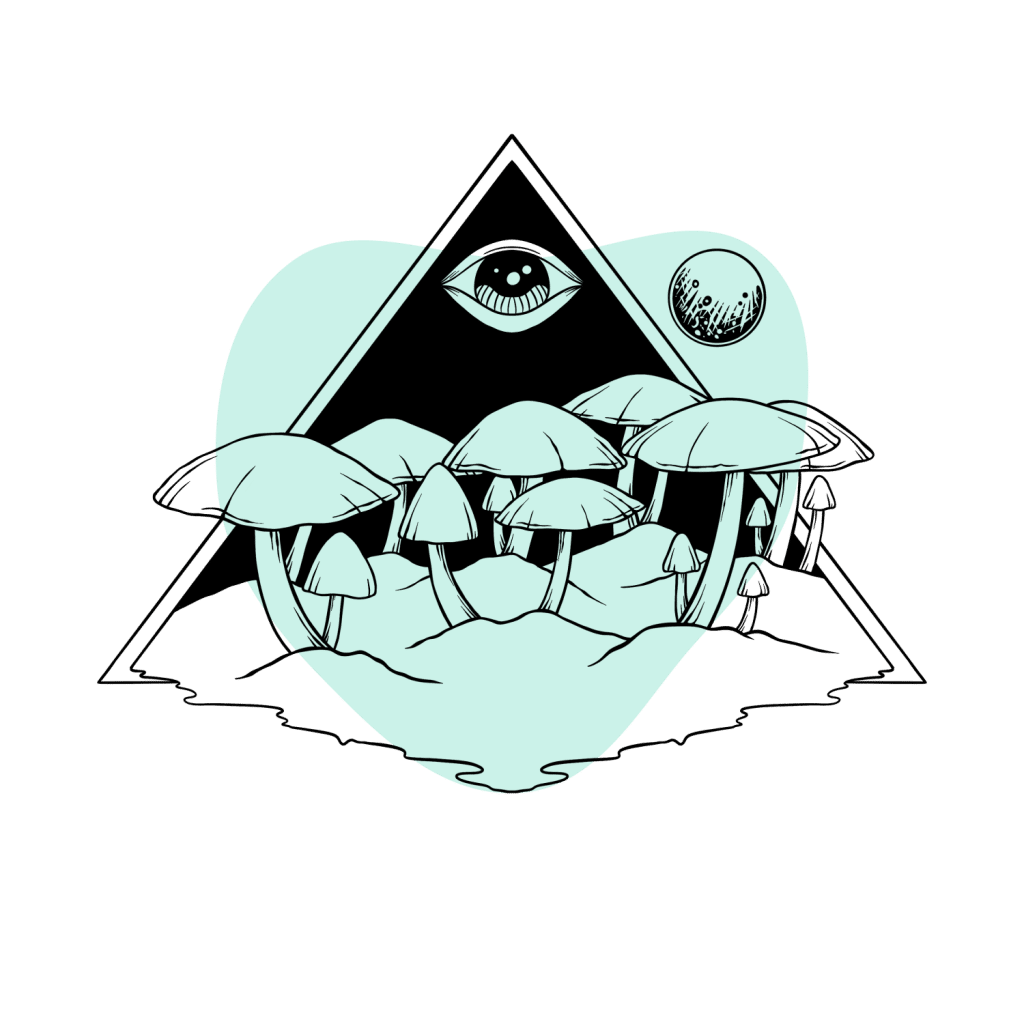
If you live in Europe, your best options will likely be The Magic Mushrooms Shop or Viking Spore, although neither had Creeper shroom spores in stock at the time of writing.
Related: How & Where to Buy Magic Mushroom Spores (Legally).
How to Grow Creeper Shrooms
The Creeper strain has a fascinating history and provides a unique trip experience, so it’s a relatively popular strain for cultivating, especially now that the price for spores has been — *ahem* — corrected.
This strain produces large mushrooms and is known to be a rapid colonizer, adding to its desirability.
The process to grow these shrooms is pretty straightforward and is similar to what you’ll find with many other strains. We’ll provide a brief explanation below, but we urge you to check out our in-depth mushroom growing guide for more information.
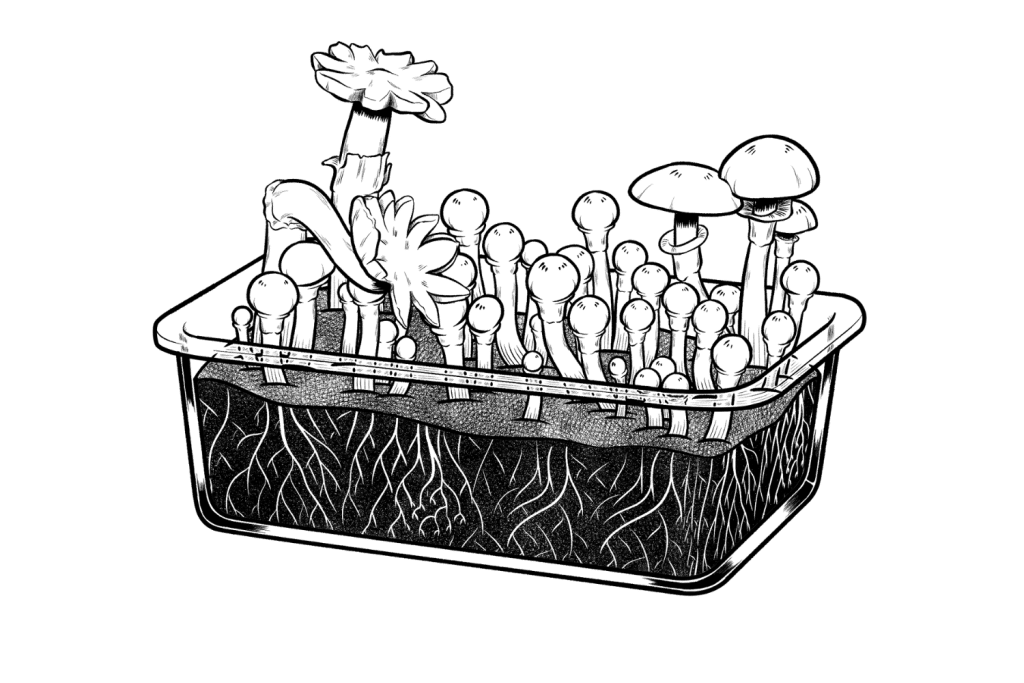
Step 1: Mix Your Substrate
You’ll first need to prepare a substrate to grow your shrooms. Most people choose either brown rice flour or rye grain as a base. Mix either one in 2 parts with 2 parts vermiculite and 1 part water. Use this to fill a mason jar nearly to the top, leaving about ¾” beneath the rim to top off with dry vermiculite.
Step 2: Sterilization
Since shroom spores will naturally have competition in raw substrate, you next need to sterilize it. Seal the jar with tin foil and the mason jar lid, and place it in a pressure cooker or Instant Pot. Maintain a temperature of at least 121 degrees F for 30 minutes.
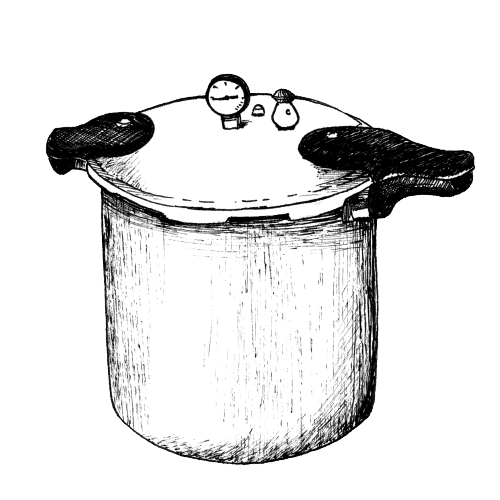
Step 3: Inoculation
Now that your substrate is sterile, you can add your spore sample to it. Before you do so, make sure to sterilize the room in which you plan to carry out the inoculation to ensure you don’t contaminate your jar.
Step 4: Incubation & Colonization
Seal the jar and keep it between 70 and 80 degrees F, above 85% humidity, and in the dark. You’ll notice the mycelium — a white, stringy substance — begin to take over the substrate. Once it is entirely covered in mycelium, you can move on.
Step 5: Fruiting
Open the jar and place it in your fruiting chamber, or remove the substrate and place it on moist vermiculite in the fruiting chamber. Keep your fruiting chamber between 50 and 65 degrees, and ensure the humidity remains above 85%. Your mushrooms should start to produce fruiting bodies in a few days.
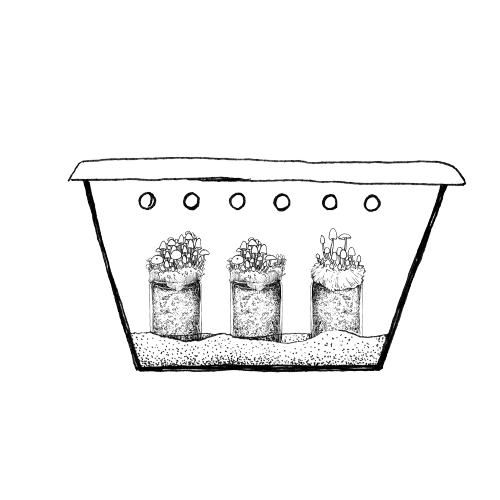
Step 6: Harvest
The veil on the bottom of the shrooms will break when they are ready to be harvested. The Creeper strain should produce 2 to 4 flushes that you can harvest before the substrate is used up. Make sure to ditch the entire batch if you notice mold growth at any point.
Similar Strains
Cultivators and shroom users often look for similar strains to favorites to see how they differ in growth patterns, appearance, potency, and the trip they provide. The below strains are similar to Creeper shrooms with regards to at least one of these criteria.
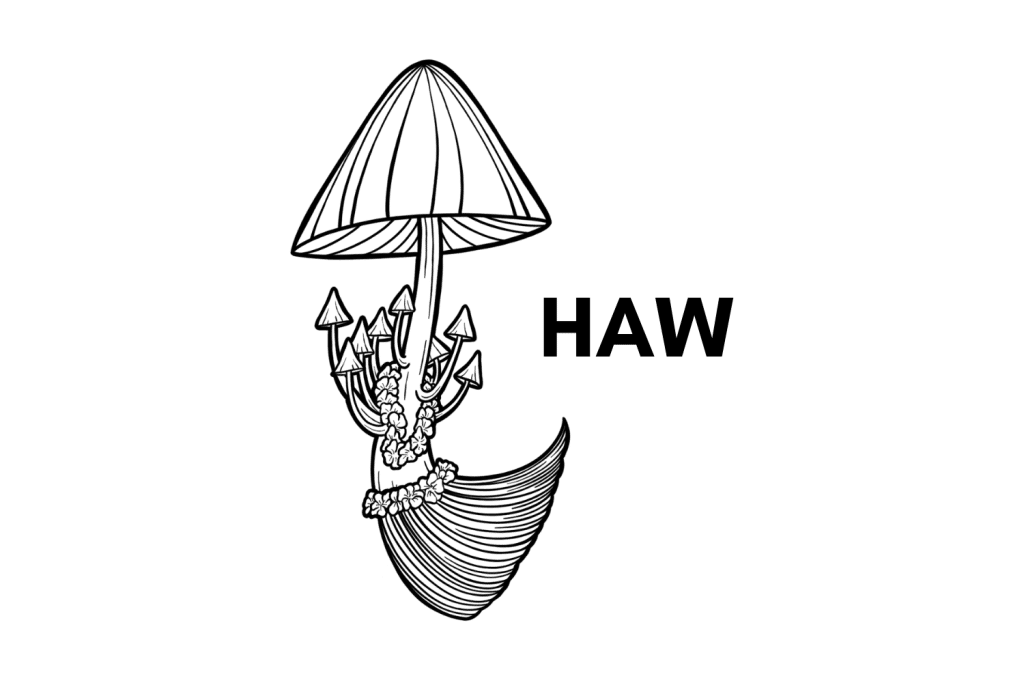
Hawaiian Shrooms
The Hawaiian strain hails from Honolulu and is one of the primary candidates the Creeper strain is thought to either be derived from. The mushrooms from this strain can vary quite a bit — sometimes possessing a dark outer circle around the cap and other times a lighter color with golden middle.
This strain first appeared on the market as PES Hawaiian, which stands for Plantasia Exotica Speciosa. PES was the Honolulu-based company that first started selling these mushroom spores online.
There are believed to be many copies of this popular strain today — likely due to the capacity for the mushrooms to appear different from one grow to the next. This is one of the reasons why some experts believe the Creeper strain is, in fact, the same as Hawaiian.
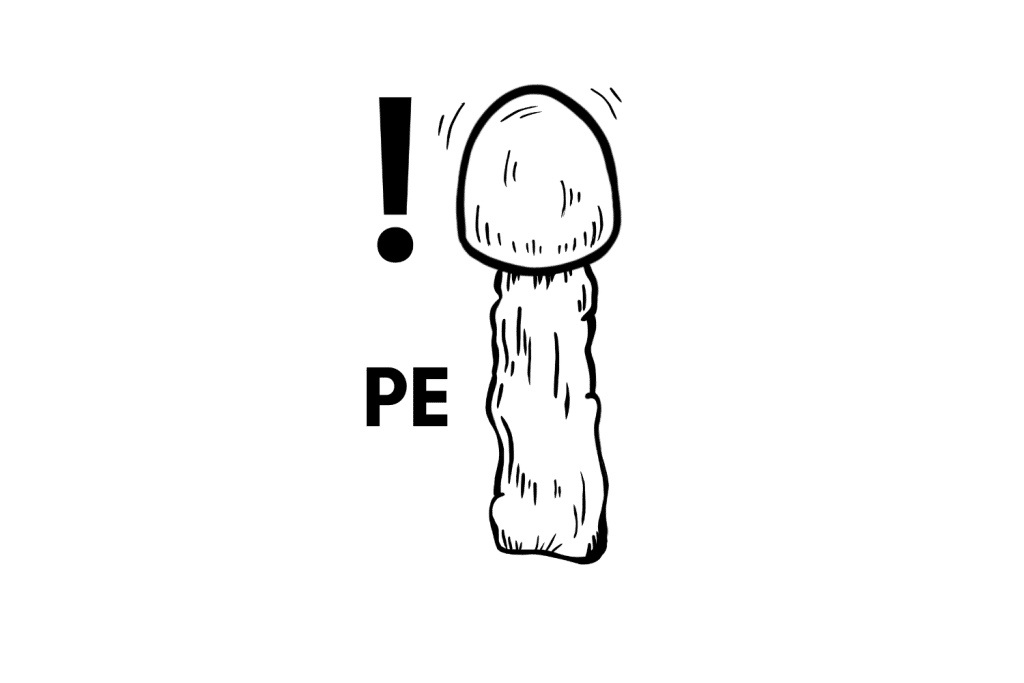
Penis Envy Shrooms
The Penis Envy strain is one of the most popular and sought-after strains in the world of magic mushrooms. These mushrooms have a distinct phallic appearance to them due to the thick stems and smaller caps with an often unbroken veil. These mushrooms are also much more potent than average.
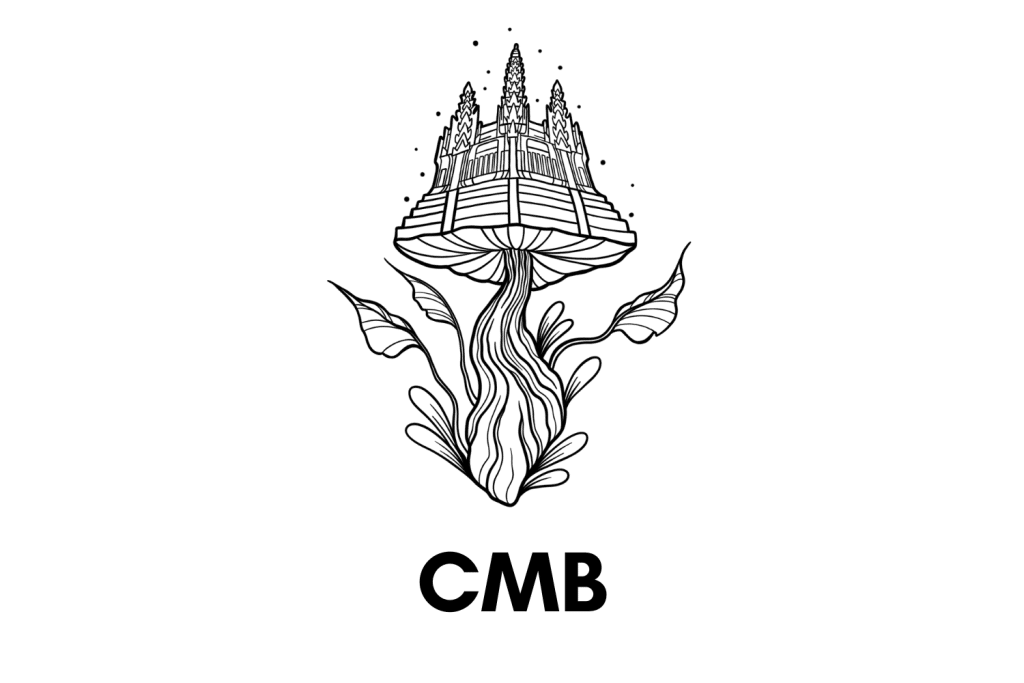
Cambodian Shrooms
Cambodian shrooms were first collected in Cambodia by John Allen, informally known as “Mushroom John.” They are similar to Creeper shrooms in that they are quite easy to cultivate and stand up to mold and disease fairly well. Some users also believe these two strains are one and the same.
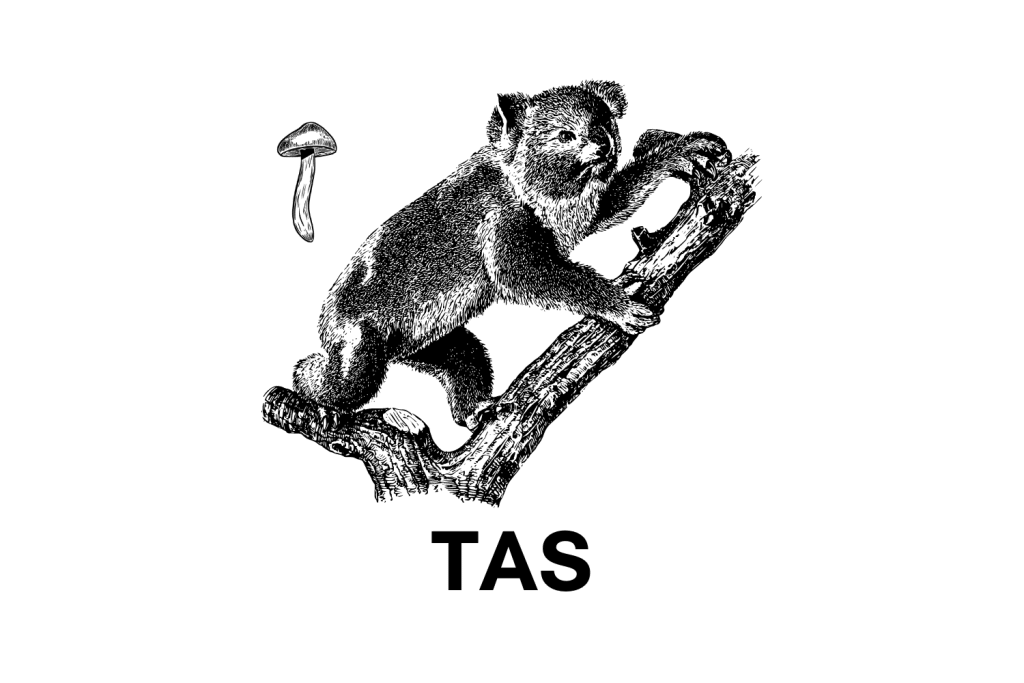
Tasmanian Shrooms
Although most users report that Creeper shrooms produce a wholly unique trip — many users can’t help but draw a comparison with the Tasmanian shrooms, which share similar growth habits. It remains unclear whether Creeper is a genetic progeny of Tasmania mixed with something else or was simply copied and rebranded from the now infamous Southern Hemisphere mushroom strain.
The Difference Between Strains & Species
There is some confusion about the terms “strains” and “species” in the world of magic mushrooms, but they refer to very different things.
The term “strain” refers to a genetic sample of mushrooms that have been isolated to have distinct phenotypical differences. The traits that are commonly repeatable within a strain include stem length and width, cap size, cap shape, psilocybin and psilocin content, and growth patterns.
The term “species” in magic mushrooms refers to a genetically unique sample of mushrooms. Species can exhibit unique and repeatable characteristics as well, but they are attributed instead to differences in genetics and not growing conditions.
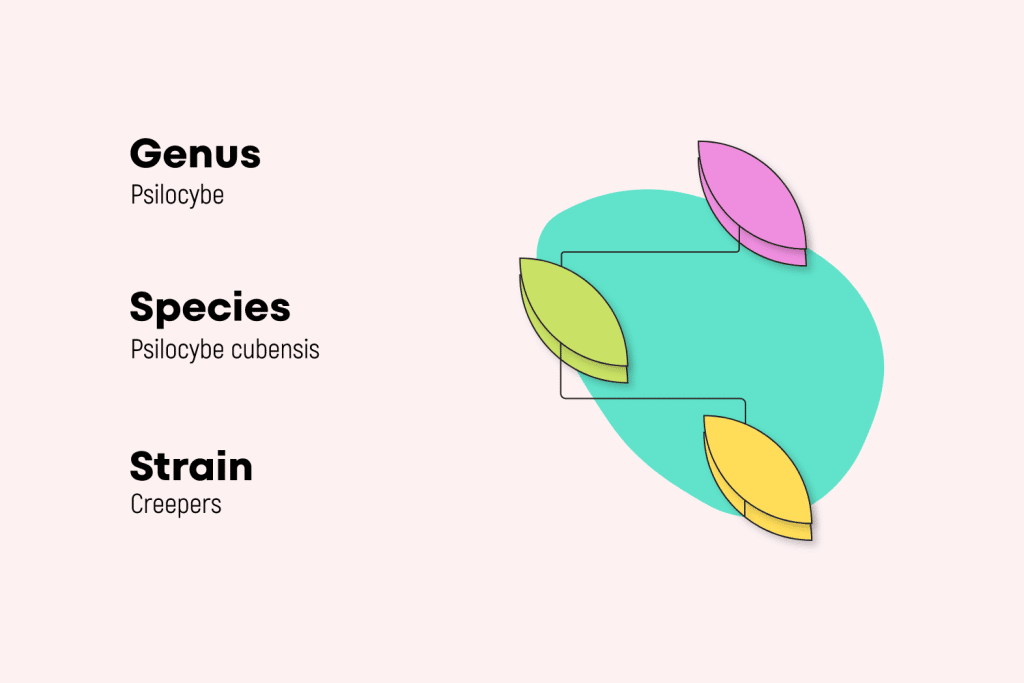
Most plants cultivated by humans have strains. Consider heirloom tomatoes or the difference between a Granny Smith apple from a Macintosh apple. Likewise, there are virtually endless strains of cannabis, kava, and kratom.
All of the strains listed for these plants are unique but remain classified within one individual species (Solanum lycopersicum, Malus pumila, Cannabis sativa, Piper methysticum, and Mitragyna speciosa, respectively).
Magic mushrooms are the same. When we discuss a magic mushroom strain, we’re referring to phenotypically distinct members of the Psilocybe cubensis genus. Other species of psychoactive fungi include Psilocybe argentipes, Psilocybe azurescens, Psilocybe mexicana, Panaeolus cambodginiensis, Gymnopilus aeruginosus, and literally hundreds of others.

